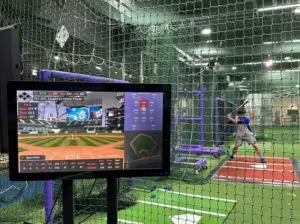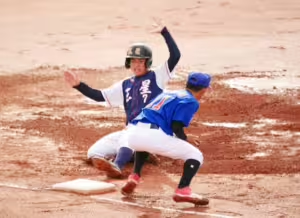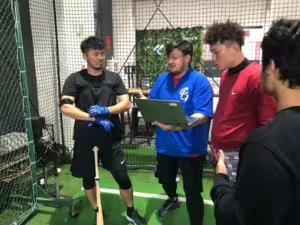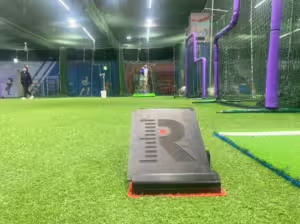Reporters/Huang Po-Chun,Hsiao Tzu-Wei

When it comes to the most dominant Taiwanese left-handed pitcher in history, retired player Kuo Hung-Chih has what it takes to be included in the conversation.
Known for his ability to throw heaters eclipsing 150 kilometers per hour, Kuo peaked during his seven Major League Baseball seasons in 2010.
In that season with the Los Angeles Dodgers, Kuo struck out 70 batters over 60 innings pitched in 56 games, earning 21 holds and 12 saves. Furthermore, he broke franchise history with a 1.20 ERA, sealing his name as the pitcher with the lowest ERA in a single season with at least 50 innings pitched.
His dominance on the mound is even more remarkable given the setbacks he suffered.
By his retirement in October 2018, Kuo had sustained the yips – a sudden and inexplicable loss of the ability to control his pitch – and underwent seven operations on his arms, including two Tommy John surgeries in 2000 and 2003 to reconstruct his elbow ligament, which led Taiwanese media to refer to him as the “Undying Bird.”
If anything, the injuries that plagued his career have led the kid from Tainan in southern Taiwan to reevaluate the way players are trained in the country.
“Many people think of me as someone who has suffered numerous injuries throughout my sports career, but it’s precisely because of these injuries that I have come to understand the importance of training,” Kuo said in an interview with Liberty Times.
He believes that scientific training can save more baseball talents from injuries.
Grind it Hard
In Taiwan, traditional baseball regimens prevail in school teams, meaning coaches tend to ask students to “grind it out.”
According to Huang Bo-Ruei, a player from Yilan County’s Zhongdao High School baseball team, in a typical training for a school baseball team during summer and winter vacation, players are requested to finish an eight-km marathon, batting and fielding exercises, mock games, and weightlifting through four training sessions each day.
The daily training usually starts in the early morning and concludes in the evening to account for about nine hours a day, a load described by Huang as “overwhelming” for the underage players.
“Many senior coaches of school teams still stick to the ‘Japanese yakyu’ style and believe that the result of a game depends on grit and how much you grind, but I don’t think that works for all players,” he said.

Taking such a regimen every day can cause players to slack off due to tiredness, kill their passion for the game, and lead them to equate baseball with sheer pain, thus reducing the number of talented players on the field, Huang added.
What’s worse, athletes are more likely to get injured with long periods of high-intensity training.
As was pointed out by Kuan Chung-Yu, who coaches at the Tainan-based Keep Tossing Lab, a studio committed to scientific baseball training, most people think it’s due to inadequate muscle strength or physical fatigue, but they overlook the importance of improper movements, which are also major causes of sports injuries.
The old belief that pitchers should throw hundreds of balls every day, even if it feels uncomfortable, puts a significant strain on the arms, Kuan said.
The conventional training method may not necessarily be suitable for everyone, Kuan said, adding that for some players, it not only fails to improve their abilities but may also have adverse effects, potentially even ending their careers.
Grind it Smart
Unlike traditional training, scientific methods can help coaches and players quickly identify key issues and minimize time wasted.
“Scientific training can focus on areas where athletes are lacking and carry out more detailed training,” Kuan said.

Currently, Rapsodo and Hittrax are the two most common tools used in scientific training in Taiwan. Rapsodo utilizes radar technology and high-speed cameras to track pitching data, while Hittrax records advanced metrics like initial velocity, launch angle, and hitting distance, simulating game scenarios.
Through scientific instruments, identifying areas needing improvement such as muscle endurance and flexibility, and providing targeted training can help athletes improve themselves while also extending their careers, Kuan said.
In a YouTube video uploaded by Kuan in May 2022, Kuo took his nephew Lin Chen-Wei, a then 20-year-old fireballer, to Kuan’s facility and modified his pitching mechanism with recourse to Rapsodo.
In that video, Kuo said Lin was in the process of fixing his pitching mechanism, and he predicted that the young phenom would be better if he kept improving.
Lin, who flirted with 153 km per hour at that time, was signed by the St. Louis Cardinals in July 2023. In a game on May 25, 2024, he threw 101 miles (162.5 km) per hour for the fastest pitch ever by a Taiwanese pitcher.
However, just like other training approaches, the volume of scientific training should be adjusted based on individual situations, noted Huang En-Xi, former Uni-President 7-Eleven Lions of the Chinese Professional Baseball League.
In the case of elementary school students, Huang said they should start with fundamental physical training to build a solid foundation because their bodies are not fully developed; as for college players, most of whom have fully developed muscles, they are expected to acquire better results through scientific training.
Worth Trying
Despite all the benefits of scientific training, the democratization of baseball science in Taiwan has faced multiple challenges.
For example, the high price of a Rapsodo – about NT$120,000 per item – makes it a luxury affordable to only a few domestic schools.
In addition, the English interfaces of the devices are not user-friendly for local coaches and school team players, most of whom spend the majority of their time practicing and studying little while they are students.
Even if they can pay for the equipment and cross the language barrier, Taiwanese coaches and players usually tend to stay in their comfort zone, hesitant to give new regimens a try, Yang Peng-yan, a former baseball player, pointed out.

He believes that players’ health should be prioritized over anything else, advocating for government initiatives to promote the popularity of sports science.
Citing the case of the United States, Kuan said top athletes mostly start cultivating knowledge in sports science from a young age, and even after retirement, they can still engage in related work.
For now, Kuan said he believes that the best solution for Taiwan is to cultivate professionals who can interpret instrument data. As more players get used to scientific training and affirm its necessity, these players can train younger players the same way when they retire and become coaches.
A field manager who works with Kuo in the advisory team, Kuan looks forward to the increasing acceptance of a training method other than “grinding it out.”
“The ultimate goal of scientific training is to address the issue efficiently,” he said.


